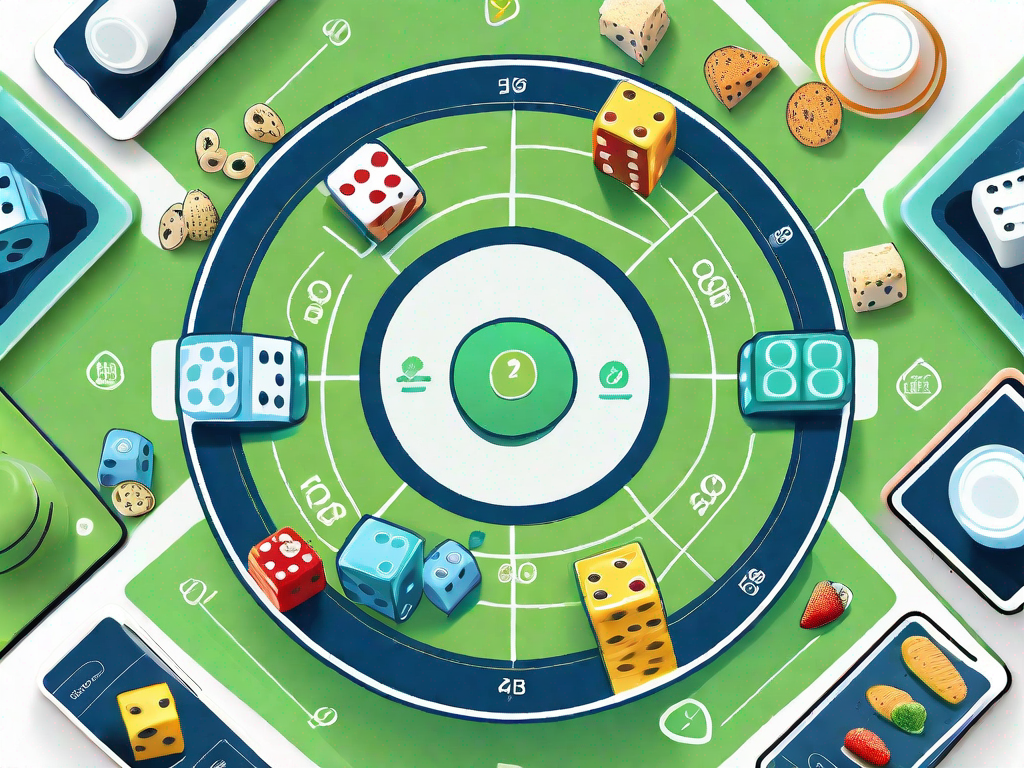In a world dominated by screens, it can be challenging for parents to navigate the ever-expanding range of entertainment options available for their children. One of the ongoing debates revolves around classic board games versus electronic board games—both with their unique set of advantages and disadvantages. In this article, we will explore the world of board games and delve into the question: “What’s best for kids?” Let’s begin by understanding the basics of classic board games.
Understanding the Basics of Classic Board Games
Classic board games have withstood the test of time, captivating generations of children and adults alike. From the ancient Egyptian game of Senet to well-known titles like Chess and Monopoly, these games have a rich history that spans centuries. Exploring the origins of classic board games can be a fascinating journey, giving children a glimpse into the past while having fun.
Let’s dive deeper into the history of classic board games and discover the fascinating stories behind some of the most beloved titles.
The History of Classic Board Games
Classic board games have a long and storied history, with roots that can be traced back thousands of years. One of the oldest known board games is Senet, which was played in ancient Egypt as early as 3100 BC. This game, often associated with the afterlife, was believed to have a spiritual significance and was often buried with individuals to accompany them into the next world.
As civilizations flourished and expanded, so did the variety of board games. In ancient Greece, a game called Petteia was popular, which involved strategic movement and capturing opponents’ pieces. The Romans had their own version called Ludus Latrunculorum, a game of military tactics and strategy.
Fast forward to the Middle Ages, and we find the emergence of Chess, a game that has stood the test of time and is still enjoyed today. Chess originated in India and spread across the world, becoming a symbol of intellect and strategy. The game’s intricate rules and the need for strategic thinking have made it a favorite among scholars and enthusiasts alike.
Another classic board game with a fascinating history is Monopoly. Originally called “The Landlord’s Game,” it was created by Elizabeth Magie in 1903 as a way to demonstrate the negative aspects of monopolies. The game went through various iterations before being published by Parker Brothers in 1935, becoming the iconic game we know today.
The Educational Value of Classic Board Games
Classic board games are more than just a form of entertainment; they offer numerous educational benefits as well. These games promote critical thinking, strategy development, and problem-solving skills. By engaging in gameplay, children exercise their minds and learn to think strategically, weighing their options and making calculated moves.
Chess, for example, is renowned for its ability to enhance cognitive abilities like memory, concentration, and decision-making. The game requires players to plan ahead, anticipate their opponent’s moves, and adapt their strategy accordingly. Through regular play, children can sharpen their analytical skills and develop a strategic mindset that can be applied to various aspects of life.
Classic board games also provide an opportunity for children to learn about history, culture, and different time periods. For instance, playing Senet can transport them back to ancient Egypt, where they can imagine themselves as pharaohs and gain a deeper understanding of the civilization’s beliefs and customs.
Social Skills Developed Through Classic Board Games
One of the significant advantages of classic board games is their ability to foster social interaction. By playing these games with family or friends, children learn important social skills such as communication, teamwork, and sportsmanship. The face-to-face nature of classic board games creates an environment where children can develop empathy, negotiation skills, and respect for others—a valuable asset in the real world.
When playing board games, children must communicate their strategies, listen to others’ ideas, and work together towards a common goal. This collaborative aspect encourages teamwork and cooperation, teaching children the importance of sharing, compromising, and supporting one another.
Furthermore, classic board games provide a platform for children to learn about sportsmanship and fair play. Winning and losing are integral parts of gameplay, and children can develop resilience and grace in both victory and defeat. They learn to celebrate their own successes while also acknowledging and appreciating the achievements of others.
In conclusion, classic board games offer a wealth of benefits beyond mere entertainment. They provide a window into history, stimulate critical thinking, and foster social skills. So, the next time you gather around the game table, remember that you’re not just playing a game—you’re embarking on a journey of learning, growth, and connection.
Diving into the World of Electronic Board Games
The Evolution of Electronic Board Games
In recent years, electronic board games have gained immense popularity. With advancements in technology, these games offer a unique and interactive experience. From video game adaptations of classic board games to innovative digital creations, electronic board games provide children with a new way of engaging with the medium. Exploring the evolution of electronic board games can open doors to exciting possibilities for children.
Cognitive Skills Enhanced by Electronic Board Games
Electronic board games offer a range of benefits, including enhanced cognitive development. These games often incorporate puzzles, strategic thinking, and problem-solving elements that stimulate the brain. Furthermore, they can help improve hand-eye coordination, spatial reasoning, and reaction time. Engaging in electronic board games can be an engaging and challenging way for children to exercise their mental faculties.
The Role of Electronic Board Games in Building Tech Skills
In a technology-driven world, exposure to electronic board games can foster essential tech skills among children. These games provide an opportunity to familiarize themselves with digital interfaces, navigation, and controls. Through interaction with electronic board games, children can develop their digital literacy, adaptability, and understanding of technological concepts, preparing them for the digital age.
Comparing Classic and Electronic Board Games
Gameplay Experience: Classic vs Electronic
When it comes to gameplay experience, classic board games and electronic board games offer contrasting experiences. Classic board games create a tangible and immersive experience as players physically interact with the game components. In contrast, electronic board games provide dynamic visuals, sound effects, and animations that enhance immersion in a virtual world. The choice between the two depends on the type of experience children prefer.
Learning Opportunities: Classic vs Electronic
In terms of learning opportunities, both classic and electronic board games have their merits. Classic board games excel in promoting critical thinking, strategic planning, and social skills. On the other hand, electronic board games provide a platform for honing technological competencies and problem-solving in a digital context. Parents should consider the specific learning goals they have for their children when selecting between the two.
Social Interaction: Classic vs Electronic
While classic board games are renowned for fostering face-to-face social interaction, electronic board games also offer avenues for connection. Many electronic board games feature multiplayer modes where children can engage with friends or family members, either locally or online. Although the nature of social interaction varies between classic and electronic board games, both provide opportunities for social engagement.
Choosing the Right Board Game for Your Child
Factors to Consider When Choosing a Board Game
When deciding on a board game for your child, several factors come into play. Consider their age, interests, and current skill level. Some games have age-appropriate elements, while others require more advanced thinking. It is essential to find a balance between challenge and enjoyment to keep your child engaged and motivated.
Balancing Classic and Electronic Games in Playtime
Instead of viewing classic and electronic board games as opposing choices, why not strike a balance? Incorporating both types of games into playtime offers a well-rounded experience. Classic board games encourage family bonding and traditional gaming values, while electronic board games introduce children to technology and provide a unique form of entertainment. Combining the best of both worlds ensures a comprehensive gaming experience.
Tailoring Game Selection to Your Child’s Interests and Abilities
Ultimately, the key to choosing the best board games for children lies in identifying their interests and abilities. Take the time to understand your child’s preferences, whether they enjoy the tactile experience of classic games or the immersive digital world of electronic games. By tailoring game selection to suit their passions, you can create an engaging and rewarding experience that keeps them entertained for hours.
In conclusion, the debate between classic and electronic board games is a complex one. Both types offer unique benefits and experiences for children. Classic board games foster critical thinking and social skills, while electronic board games promote technological proficiency and cognitive development. By considering factors such as gameplay experience, learning opportunities, and social interaction, parents can make informed decisions when choosing the right games for their children. Ultimately, striking a balance and tailoring game selection to suit their interests and abilities can create a fulfilling gaming experience that complements their overall growth and development.


